Compression Socks Intervention In the Misery that is Edema
Obviously, leg swelling can be a major buzz kill. Imagine traveling for five hours to work or vacation and having to deal with heavy and sore legs when you reach your destination. Instead of accomplishing the purpose of your work or vacation, you end up dragging yourself around with swollen puffy legs. This swelling is thanks to a condition called edema. Edema occurs when tiny pockets of your body’s tissues have started retaining fluid. Thankfully, you can manage your edema with socks that prevent the accumulation of fluid in your legs and feet.
Swollen legs can also worsen health conditions such as pregnancy. During pregnancy, you are already handling a lot: a growing belly, increased weight, and the nutritional and emotional wellbeing for two. Then edema waltzes in, now making an already difficult situation overbearing. Regardless of your circumstance, compression socks for edema are essential for people struggling with fluid accumulation in the legs.
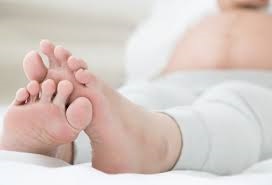
What Causes Edema and Why does it Warrant Compression Socks?

Edema is a symptom of an underlying health problem. Some of the conditions known to trigger fluid retention include,
- Eating meals with high sodium content
- Pregnancy
- Certain medications that interfere with fluid homeostases such as NSAIDs and corticosteroids
- High estrogen levels
- Medical Conditions which affect the heart, liver and kidney
Edema develops when fluid leaks from your blood and accumulates in the tiny spaces of your body tissue. Pressure, inflammation or tissue damage can cause this fluid to be released from your blood capillaries and spread into various areas of your body. The leakage could also become localized in a particular area. When the fluid collects specifically in your feet, this turns into peripheral edema.
Normally, the body tries to rectify this problem by retaining more fluid in the kidneys. However, this doesn’t alleviate the issue; it actually worsens the leakage in your legs causing even more swelling. Peripheral edema, thank heavens, can be contained with specialty socks for edema.
Edema Occurs in Other Body Regions too
Aside from the legs, fluid accumulation can happen in any part of your body. Peripheral edema, for instance, also occurs in your hands. Other susceptible areas include the abdomen and face. Medical socks prevent fluid buildup in your legs by improving circulation.
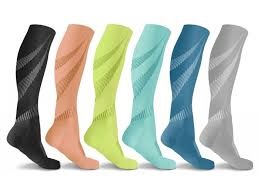
Your Physician and Socks for Anti-swelling

While the process of fluid accumulation development is known, the cause must be examined by a physician. Socks for edema can provide a much needed solution for swelling and soreness in the legs. Your doctor might prescribe these socks for you once your prognosis is determined and treatment is initiated.
Unfortunately, compression socks alone will not cure the cause of edema but they can serve as a preventative and management solution for edema. They will also help alleviate the discomfort of edema, as well as dissolve the circulation problem that gives rise to fluid leakage.
Edema in Your Lower Limbs
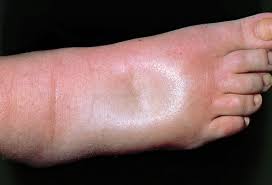
Fluid retention in your legs occurs primarily due to poor blood circulation. Blood circulation from your lower extremities to your heart is exceptionally difficult compared to blood circulation to the rest of your body because of several reasons.
Blood Flow Rate in the Veins
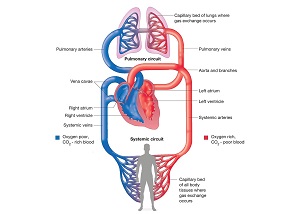
There are two main blood vessels involved in blood transportation: the veins and the arteries. Blood in your veins flows at a lower rate compared to blood in your arteries. The energy of the flow rate in the arteries is created by your pumping heart. Arteries are the first to receive blood from the heart and transport it to the rest of the body.
Why Blood Flow Slows Down in Your Veins
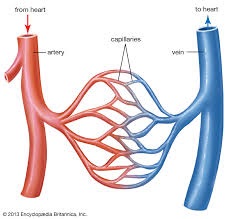
The rate of blood flow reduces as blood is exchanged between the arteries and veins through the capillaries. Therefore, as the veins take the blood back to the heart the flow rate is tremendously reduced. This slower rate increases the likelihood of blood stagnation in the veins, especially in tissues located further from the heart.
The proximity of Your Lower Limbs to the Heart
The further your tissues are from the heart the slower blood flows in your veins. Blood seems to stagnate in your lower limbs creating the possibility of fluid leakage into the surrounding tissues. The condition is aggravated when you are inactive for long periods of time.
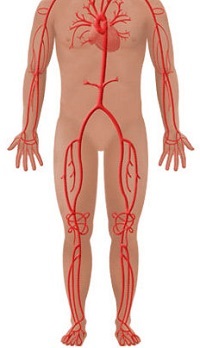
Gravity also affects circulation because it acts against the direction of blood flow in your legs. Consequently, blood in the veins tends to linger in your lower limbs increasing the chances of fluid leakage, particularly, when you are inactive. While the effects of gravity can be countered with physical activity, medical conditions, lifestyle and medication may limit your ability to remain active. Therefore, you need an alternative to combat gravity in long periods of rest. The good news is compression socks can prevent fluid accumulation in your legs by countering the force of gravity.
The Importance of Leg Activity
Unless you are inactive for long periods of time, blood flow in your veins should not be a cause of concern. In addition to using compression socks, incidences of stagnation can be thwarted by becoming more active. Walking and exercising, for instance, improve circulation in your lower limbs through the contraction of your calf muscles. The muscles squeeze your veins creating enough force to push up the blood.

How Edema Socks Function

The purpose of compression socks is to improve circulation in your legs; this, in turn, prevents pulling and retention of blood and fluids. The socks are a part of compression attire which function by adding pressure in your veins causing blood to flow continuously. By managing circulation, these socks prevent the development of edema.
Compression Ratio
Socks for preventing fluid accumulation have specific features that enable it to improve blood circulation. Each feature contributes to making your blood flow in a unique way. One such feature is the compression ratio. The compression ratio determines the degree of pressure subjected to your leg veins. Socks for edema have fixed compression ratios. The ratios indicate the maximum and minimum pressure contained in the socks. Compression is measured in mmHg (read as millimeters of mercury) because it is a measure of pressure. The socks come in three standard compression ratios: 15-20mmHg, 20-30mmHg and 30-40mmHg.
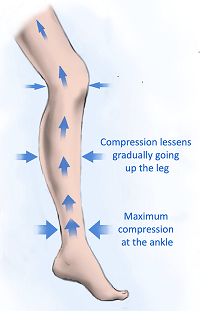
Each standard ratio solves blood circulation problems in varying degrees.
- The 15-20mmHg compression socks, for instance, are perfect for minor and occasional swelling. Your doctor may recommend this compression ratio if your condition is mild.
- The 20-30mmHg socks, on the other hand, are the first medical grade socks. They can be used to manage leg swelling during pregnancy. They also provide relief for heavy and fatigued legs.
- The 30-40mmHg socks belong to the second medical grade. They are a perfect solution for severe edema.
If you are unsure of which compression ratio is suitable for your condition, seek medical advice from your physician.
Graduated Compression Factor

Anti-swelling socks also have varying pressures along their length; this pressure difference is known as the graduated compression factor. For example, a 20-30mmHg sock has its highest pressure at 30mmHg at the bottom of the hosiery and the minimum pressure, 20mmHg, at the top.
The pressure variation is quintessential in creating the needed pressure to maintain blood flow in your leg veins.The pressure decreases gradually from the bottom to the top of the socks creating the needed force that steers the flow of blood from your legs to your heart. The graduated compression factor is an important facet of any compression gear. Without it, the socks are useless.
The Length of Anti-Edema Sock
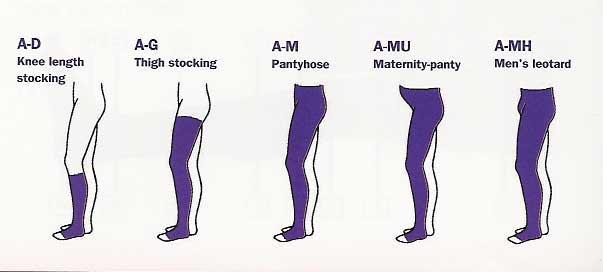
Compression socks come in different lengths. The length of the socks determines its area of action. Knee-high socks work on the feet, ankles and calf. Thigh-high socks, on the other hand, work on the lower leg and the thighs. Full-length hosiery work on the entire leg length, as well as the pelvic region. The type of length you choose is dependent on your condition and the location of the edema. If your fluid accumulation is localized in your lower legs, then having knee-high socks will be sufficient to eradicate fluid accumulation in that region.
Quality of the Socks

Socks for preventing leg swelling may have the necessary graduated compression but lack in other important characteristics. If the sock does not fit your leg, it will not be effective in improving blood circulation. Therefore, the material used to make the socks should have long-lasting elasticity and the tensile strength to grip your leg muscles for long periods time. The sock material can also predict the quality, usability and durability of the socks.

When considering the size of the socks, ensure that the socks fit both vertically and along the length of your leg. Your compression socks must properly fit your legs, otherwise they will be inefficient in improving circulation. The sock will only prevent fluid percolation and retention in your leg tissues if it possesses all these characteristics.
Popular Articles on ComproGear
Rose Toy With Medical Grade Silicone
Compliance
It is essential that you adhere to wearing the socks according to your doctor’s instructions. Removing the socks before the stipulated time will not reduce edema. Similarly, the socks should not be rolled down. They should be always pulled up on your legs.
The duration of donning compression socks will depend on your medical condition. Your doctor will advise on the number of days you will be wearing the socks. Typically, the socks are worn from the time you get out of bed until you go to bed at night, for a specified number of days. Your doctor will also examine your condition during this period of time to determine whether the socks are effective in reducing edema.
Severe cases may require switching to socks with high compression ratios. Most importantly, you must be willing to comply to get better.
Studies have shown that compression gear will not work properly if the patient does not comply fully with the requirements. Removing the socks before the day ends and folding them interferes with their mechanism of action.
Anti-Edema Socks are the Cat’s Pajamas

Socks for edema are fundamental in eliminating swelling, leg heaviness and soreness. Compression socks come in handy during sickness enabling you to pull through without the discomfort and dangers of poor leg circulation. You can now enjoy long trips or occupations that require long standing and/or sitting periods.
Now that you know the many benefits of these medical socks, you are at an advantage when making informed decisions concerning which socks to purchase and how to use the socks for the best results.
Remember, compliance is key to a good outcome!
This page last updated December 16, 2022
